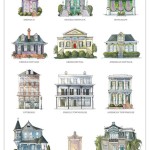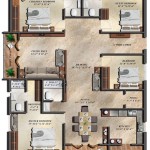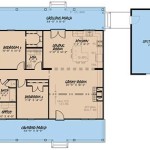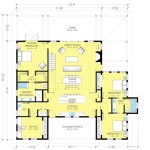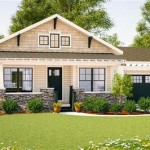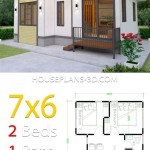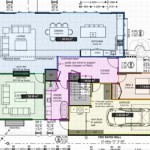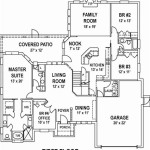1 Bedroom Studio Floor Plans With Dimensions In Meters
The increasing demand for compact and affordable living spaces has led to a surge in the popularity of 1 bedroom studio apartments. These units offer a practical solution for individuals and couples seeking independent living without the financial burden of larger properties. Understanding the layout and dimensions of these spaces, particularly in metric units, is crucial for effective furniture placement, optimizing space utilization, and ensuring a comfortable living environment. This article will explore various 1 bedroom studio floor plans with dimensions in meters, highlighting key design considerations and providing insights into maximizing the potential of these compact living spaces.
A 1 bedroom studio apartment, despite its name, is typically a single-room living space incorporating a sleeping area, a living area, and a kitchenette. A separate bathroom is standard. The "1 bedroom" aspect usually indicates a clearly defined sleeping area, often separated visually or structurally from the main living space. This separation can be achieved through partial walls, screens, strategically placed furniture, or even curtains. The dimensions provided in meters allow for precise planning and accurate visualization of the available space.
Understanding Common 1 Bedroom Studio Layouts
The floor plan of a 1 bedroom studio apartment significantly impacts its functionality and overall livability. Several common layouts exist, each with its own advantages and disadvantages. A linear layout is perhaps the most straightforward, with all the elements arranged along one wall. This configuration is often found in smaller units and can be efficient in terms of plumbing and electrical wiring. A corner layout utilizes a corner of the building, potentially offering more natural light and a greater sense of space. An L-shaped layout separates the living area from the sleeping area, creating a more defined separation within the single room. The choice of layout depends on the available space, personal preferences, and the desired level of separation between different functional areas.
For example, a linear layout might have dimensions of 6 meters in length and 4 meters in width, giving a total area of 24 square meters. The kitchen area could be allocated 1.5 meters along the 4-meter wall, leaving 2.5 meters for the living area. The sleeping area would then occupy the remaining space, perhaps defined by a rug or a change in flooring. A corner layout, on the other hand, might have dimensions of 5 meters by 5 meters, with the corner windows providing ample light and offering potential for a defined seating area. An L-shaped layout could feature a living area measuring 4 meters by 3 meters and a sleeping area of 3 meters by 2 meters, effectively separating the two zones.
Regardless of the specific layout, careful consideration should be given to the placement of major appliances, such as the refrigerator and washing machine, as well as the positioning of windows and doors. These elements will influence the flow of traffic and the overall usability of the space.
Key Dimensions and Their Impact on Functionality
Precise measurements are essential for accurate planning and effective space utilization. When considering a 1 bedroom studio apartment, several key dimensions are particularly important. The overall length and width of the apartment provide the total area and dictate the potential for different layouts. The height of the ceiling affects the sense of spaciousness and can influence the choice of lighting fixtures and storage solutions. The dimensions of the kitchen area determine the available counter space and storage capacity. The size of the bathroom impacts its functionality and the potential for adding storage or upgrading fixtures.
A ceiling height of 2.4 meters is generally considered standard, but higher ceilings, such as 2.7 meters or more, can create a more open and airy feeling. Kitchen countertops typically have a depth of 0.6 meters, and the length of the countertop space will depend on the available space and the desired level of functionality. Bathroom sizes can vary significantly, but a minimum width of 1.5 meters and a length of 2 meters is generally considered adequate. The size of the window openings also plays a crucial role, as they determine the amount of natural light that enters the apartment. Larger windows can make a small space feel more spacious and inviting.
Furthermore, it is important to consider the thickness of the walls, as this can reduce the usable floor area. Interior walls typically have a thickness of 0.1 meters to 0.15 meters, while exterior walls may be thicker for insulation purposes. The placement of structural columns can also impact the layout and should be taken into account when planning furniture placement.
For instance, if a 1 bedroom studio has a kitchen area measuring 2 meters by 1.5 meters, it allows for a decent amount of counter space and storage, potentially accommodating a small refrigerator, a two-burner cooktop, and some cabinets. However, if the kitchen area is only 1.5 meters by 1 meter, it may be necessary to opt for smaller appliances and prioritize vertical storage solutions.
Strategies for Maximizing Space in a 1 Bedroom Studio
Given the limited space in a 1 bedroom studio apartment, employing effective space-saving strategies is crucial. Multi-functional furniture, such as sofa beds, folding tables, and storage ottomans, can significantly enhance the versatility of the space. Vertical storage solutions, such as tall bookshelves and wall-mounted cabinets, can maximize storage capacity without taking up valuable floor space. Utilizing mirrors can create the illusion of more space and amplify natural light. Minimizing clutter and maintaining a clean and organized environment are also essential for maximizing the sense of spaciousness.
Consider a sofa bed with dimensions of 2 meters by 0.9 meters when in sofa mode and 2 meters by 1.4 meters when converted into a bed. This allows for comfortable seating during the day and a comfortable sleeping area at night. A folding table with dimensions of 1 meter by 0.6 meters can provide a dining or work surface when needed and can be easily folded away when not in use. Wall-mounted shelves with a depth of 0.3 meters can provide ample storage for books, decorative items, and other belongings without encroaching on the floor space.
Furthermore, the use of light colors on the walls and flooring can create a more open and airy feeling. Lighter colors reflect more light, making the space feel brighter and more spacious. Avoiding dark and heavy furniture can also contribute to a lighter and more open aesthetic. Utilizing sheer curtains or blinds allows for natural light to enter the apartment while maintaining privacy. The strategic placement of lighting fixtures can also enhance the sense of space. Recessed lighting can minimize visual clutter, while strategically placed lamps can create a warm and inviting atmosphere.
Another key strategy is to define different zones within the studio apartment. This can be achieved through the use of rugs, screens, or strategically placed furniture. For example, a rug can define the living area, while a screen can separate the sleeping area from the rest of the apartment. The use of different flooring materials can also help to delineate different zones. For instance, the kitchen area could have tile flooring, while the living area could have wood flooring.
In addition, decluttering regularly is essential for maintaining a sense of space and organization. Getting rid of unnecessary items and keeping belongings neatly organized will make the apartment feel larger and more comfortable. Consider using storage containers to organize belongings and keep them out of sight. Investing in high-quality storage solutions can significantly improve the functionality and livability of a small apartment.
Ultimately, designing a functional and comfortable 1 bedroom studio apartment requires careful planning, attention to detail, and a strategic approach to space utilization. By understanding the common layouts, key dimensions, and effective space-saving strategies, individuals can create a living space that meets their needs and enhances their quality of life.

Living Room Furniture Includes Sofa 1 Bedroom Apartment Floor Plans With Dimensions Sqm Hd Png Transpa Image Pngitem

30x26 House 1 Bedroom Bath 780 Sq Ft Floor Plan Instant Model 3b

M C12 Studio 1 2 Bedroom Apartments In River North Chicago The Bush Temple

Solved Figure Q4 Depicts The Design Of A One Bedroom Studio Chegg Com

1 Bedroom Apartment Floor Plans Leona Apartments Honeypark Dun Laoghaire Dublin

M C21 Studio 1 Bedroom Apartments At The Duncan Chicago S West Loop

Small Space Lessons Floorplan Solutions From Geoff S Southern Exposure Studio

House Design 1 Bedroom 400 Sq Ft Or 10x4 Sqm

Apartments In Pittsburgh Pa Hot Metal Flats

Small House Plan 4 5x9 Meter One Bedroom Samhouseplans
Related Posts

